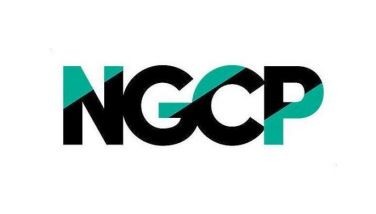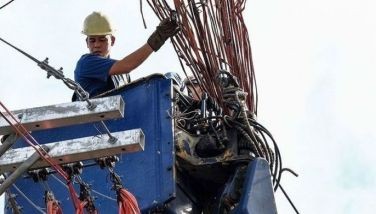Peso seen plunging to 57:$1 in Q2, then recovering to 56 by yearend
March 4, 2004 | 12:00am
The peso will likely slump to P57 to the US dollar by the second quarter of the year but is expected to recover back to P56:$1 at the close of the year.
In a presentation Tuesday night, Standard Chartered Bank (SCB) Global Research Group chief economist Steve Brice pointed out that the local currency’s more realistic yearend value would hover in the P56 level.
"Much depends on the outcome of the elections, and what would be the policies of the new administration," Brice said, adding that the global perception of "honest and clean elections" likewise weighed just as significantly.
Historical figures show that the peso tends to weaken in the run-up to the election period while recovering towards the last quarter.
The key to the recovery, Brice said, is the consistently increasing amount of dollar remittances of overseas workers. Since 1991, the contribution of remittances to the gross domestic product (GDP) has increased from a little over two percent to almost 10 percent last year.
Brice also downplayed concerns on the government’s fiscal deficit, saying that the 2004 target was "realistic." The first half will reflect huge expenditures fueled mainly by electoral spending. But the second half should reflect a slight recovery on improvements in revenue collections, economic activity and huge dollar remittances.
The SCB economist admitted that much still depends on the winning presidential candidate and the programs and policy reforms that would be put in place.
"More reforms must be implemented if the Philippine government would want to achieve an equilibrium between expenditures and earnings by 2009," Brice said.
"Political uncertainty and policy performances weigh heavily on (business) sentiments," Brice said.
In a presentation Tuesday night, Standard Chartered Bank (SCB) Global Research Group chief economist Steve Brice pointed out that the local currency’s more realistic yearend value would hover in the P56 level.
"Much depends on the outcome of the elections, and what would be the policies of the new administration," Brice said, adding that the global perception of "honest and clean elections" likewise weighed just as significantly.
Historical figures show that the peso tends to weaken in the run-up to the election period while recovering towards the last quarter.
The key to the recovery, Brice said, is the consistently increasing amount of dollar remittances of overseas workers. Since 1991, the contribution of remittances to the gross domestic product (GDP) has increased from a little over two percent to almost 10 percent last year.
Brice also downplayed concerns on the government’s fiscal deficit, saying that the 2004 target was "realistic." The first half will reflect huge expenditures fueled mainly by electoral spending. But the second half should reflect a slight recovery on improvements in revenue collections, economic activity and huge dollar remittances.
The SCB economist admitted that much still depends on the winning presidential candidate and the programs and policy reforms that would be put in place.
"More reforms must be implemented if the Philippine government would want to achieve an equilibrium between expenditures and earnings by 2009," Brice said.
"Political uncertainty and policy performances weigh heavily on (business) sentiments," Brice said.
BrandSpace Articles
<
>
- Latest
- Trending
Trending
Latest
Trending
Latest
Recommended
























